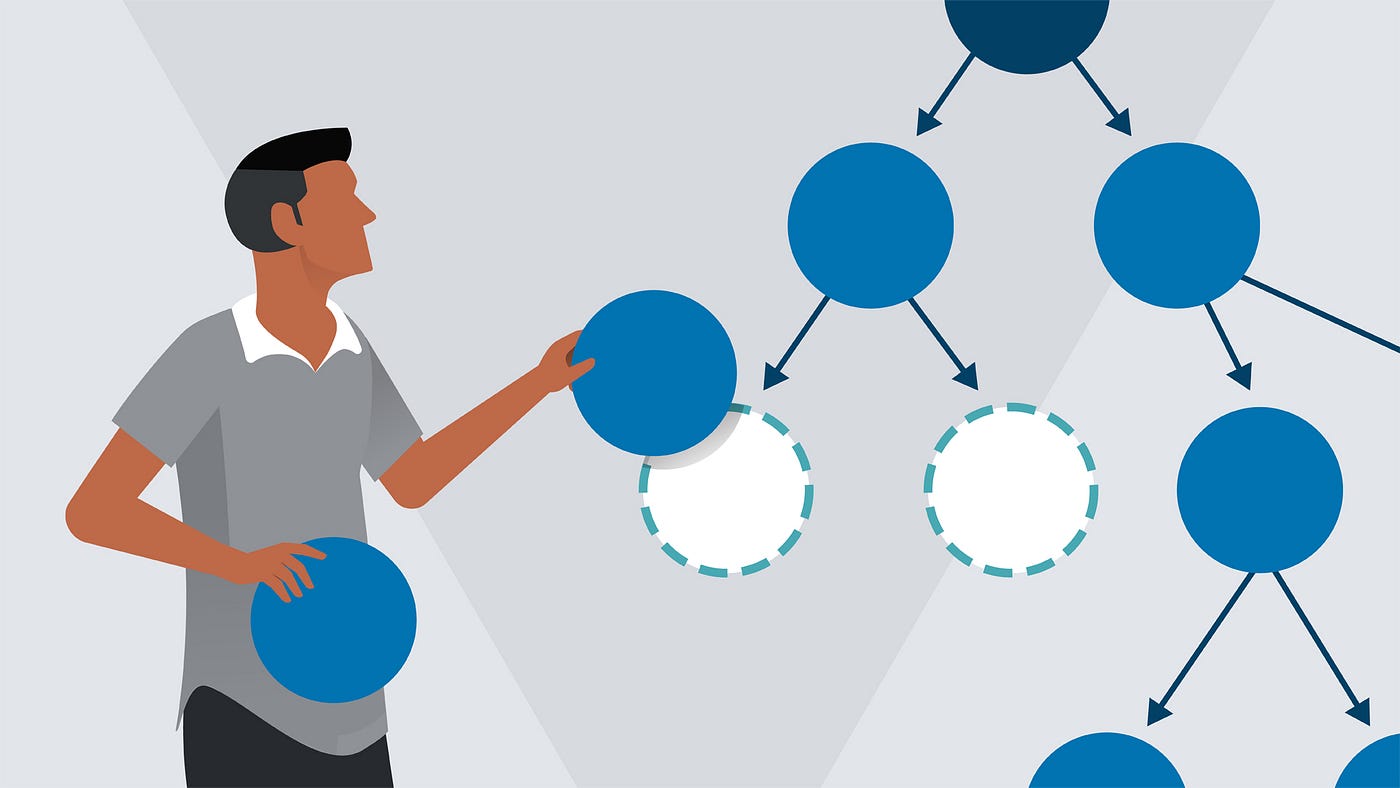In the digital age, advertising has evolved far beyond traditional methods, thanks to sophisticated ad algorithms that power platforms like Google, Facebook, and Instagram. These algorithms analyze vast amounts of user data to determine which ads to show to whom, making them incredibly powerful tools for marketers. Understanding and manipulating these ad algorithms can significantly enhance your advertising strategy, allowing you to target the right audience, optimize your ad spend, and ultimately increase your return on investment (ROI).
Table of Contents
What is an Ad Algorithm?
Ad algorithms are sophisticated systems used by digital advertising platforms to determine which advertisements to show to which users. These algorithms analyze vast amounts of data. They assess user behavior, preferences, and demographics, to predict which ads are most likely to engage a particular user. The primary goal of ad algorithms is to maximize the relevance and effectiveness of ads. This allows companies to increase user engagement and advertiser ROI.
How Do Ad Algorithms Work?
Ad algorithms function through a continuous process of data collection and analysis. Here is a simplified breakdown of how they work:
Data Collection
Ad algorithms gather data from various sources. This data includes user interactions on the platform, such as clicks, likes, shares, and comments. It also includes browsing history, search queries, and even offline behavior if the user has allowed such tracking.
User Profiling
Using the collected data, the algorithm builds detailed profiles of each user. These profiles include demographic information (age, gender, location), interests, behavior patterns, and past interactions with ads.
Ad Matching
The algorithm then matches ads to users based on the likelihood of engagement. It considers factors such as relevance to the user’s profile, past behavior with similar ads, and the overall performance of the ad itself.
Ad Placement
Finally, the algorithm decides where and when to place the ad. This decision is influenced by factors such as the user’s current activity, the content they are viewing, and the bids from advertisers.
The Importance of Ad Algorithms
Ad algorithms are crucial for both users and advertisers. For users, these algorithms ensure that the ads they see are relevant and non-intrusive. For advertisers, they provide an efficient way to reach potential customers who are most likely to be interested in their service. Understanding how these algorithms work allows advertisers to optimize their campaigns.
Key Strategies for Manipulating Ad Algorithms
These are some of the best strategies to manipulate your ad algorithm.
Precise Audience Targeting
Begin by defining your target audience using demographic data. This includes age, gender, location, income level, and education. Platforms like Google Ads and Facebook Ads allow you to specify these parameters, ensuring your ads reach the most relevant users.
For example, if you are advertising a luxury product, targeting higher-income brackets will yield better results. Similarly, location-based targeting can be crucial for local businesses.

Interest Targeting
Interest targeting focuses on users’ hobbies, activities, and preferences. By identifying interests that align with your product or service, you can target users who are more likely to engage with your ads. Facebook, for instance, enables advertisers to target users based on their likes, follows, and interactions.
Behavioral Targeting
Behavioral targeting reaches users based on their online activities. This can include websites visited, content consumed, and past purchases. Tools like Google Analytics provide insights into user behavior. They help you adjust your ad settings accordingly.
Creating Compelling Ad Content
Visual appeal is critical in capturing user attention. Use high-quality images or videos that are visually striking and clearly convey your message. This is especially important on visually-oriented platforms like Instagram and Pinterest.
For example, a well-produced video ad showcasing the features of a new smartphone can attract more views and interactions than a simple text-based ad.
Engaging Copy
Your ad copy should be concise, persuasive, and tailored to your audience. Use language that resonates with your target demographic and includes a clear call-to-action (CTA). A/B testing different versions of your copy can help determine what works best.
For example, a compelling CTA like “Shop Now and Save 20%” can drive immediate action compared to a more generic message.
Utilizing Retargeting Techniques
Retargeting involves showing ads to users who have previously interacted with your website or app. This technique can help re-engage potential customers who did not convert on their first visit. It increases the likelihood of a sale.
Setting Up Retargeting Campaigns
Platforms like Google Ads and Facebook Ads Manager offer options to create custom audiences based on user interactions. They use aspects like page visits or abandoned shopping carts to identify people who are willing to re-engage. By targeting these users with tailored ads, you can remind them of your offerings and encourage them to complete their purchase.
For example, if a user added items to their cart but did not check out, a retargeting ad offering a discount on those items can incentivize them to return and complete the purchase.
Leveraging Lookalike Audiences
Lookalike audiences are groups of users who share characteristics with your existing customers. By targeting these users, you can expand your reach to potential customers who are likely to be interested in your product or service.
Creating Lookalike Audiences
Use tools like Facebook’s Lookalike Audiences or Google’s Similar Audiences to create these groups. Input data from your current customer base, and the platform will find users with similar profiles.
For example, if your current customers are predominantly young professionals interested in tech gadgets, a lookalike audience will target users with similar demographics and interests, increasing the chances of engagement and conversion.
Optimizing Ad Spend
Your ad spend determines whether you are able to turn a profit or not. Optimizing your spending ensures that you are spending less for every conversion.
Budget Allocation
Efficiently allocating your ad budget is essential for maximizing ROI. Focus on high-performing ads and adjust your spend based on performance metrics. Tools like Google Ads’ Smart Bidding can help automate this process by optimizing your bids in real time.

For example, if a particular ad is driving more conversions, allocate a larger portion of your budget to that ad to capitalize on its success.
Bid Strategies
Experiment with different bid strategies to find what works best for your campaigns. Options include cost-per-click (CPC), cost-per-impression (CPM), and cost-per-acquisition (CPA). Each strategy has its own benefits and should be chosen based on your specific goals.
Leveraging Lookalike Audiences
Lookalike audiences are one of the most powerful strategies for expanding your reach. It can help you drive higher engagement in your advertising campaigns. Lookalike audiences allow you to target new users who share similar characteristics with your existing customers. It makes them more likely to be interested in your products or services.
Understanding Lookalike Audiences
Lookalike audiences are groups of people who resemble your current customer base. Ad platforms like Facebook and Google analyze the data of your existing customers. They can use this to identify users with similar behaviors, interests, and demographics. This helps in creating a highly targeted audience that is likely to respond positively to your ads.
Creating Lookalike Audiences
Creating lookalike audiences involves several steps, depending on the platform you are using. Here is a general approach:
Gather Data from Your Current Customers
Start by collecting data on your existing customers. This can include information like demographics (age, gender, location), behaviors (purchase history, website visits), and interests (liked pages, followed accounts).
Upload Your Customer Data
Use your ad platform’s tools to upload your customer data. On Facebook, for example, you can upload your customer list directly into the Ads Manager. On Google, you can use Customer Match to upload your data.
Define Your Source Audience
Your source audience is the group of people whose characteristics will be used to create the lookalike audience. Ensure that your source audience is large enough to provide a robust data set, but not so broad that it dilutes the shared characteristics.
Create the Lookalike Audience
Once your source audience is defined, the ad platform will use its algorithms to find new users who match the characteristics of your source audience.
Optimizing Ad Spend
Optimizing ad spend is crucial for maximizing the return on investment (ROI) of your advertising campaigns. Effective budget management ensures that your resources are allocated to the highest-performing ads. This will help you achieve your marketing goals without overspending. Here are key strategies for optimizing your ad spend:
Budget Allocation
Start by distributing your budget based on campaign performance. Identify which campaigns, ad sets, or individual ads are delivering the best results and allocate more budget to them. This ensures that your resources are focused on high-performing areas.
Regular Reviews
Conduct regular reviews of your budget allocation. Ad performance can fluctuate due to various factors, so it’s important to adjust your budget allocation based on the latest data. Weekly or bi-weekly reviews can help you stay on top of changes and make informed decisions.
Seasonal Adjustments
Consider seasonal trends and adjust your budget accordingly. For instance, if you know that your products sell more during certain times of the year (e.g., holidays, back-to-school season), allocate a larger portion of your budget during these peak periods.
Bid Strategies
Different bid strategies serve different goals. Here are some common ones:
- Cost-Per-Click (CPC): Ideal if your primary goal is to drive traffic to your website. You pay each time someone clicks on your ad.
- Cost-Per-Impression (CPM): Best for increasing brand awareness. You pay for every 1,000 impressions (views) of your ad.
- Cost-Per-Acquisition (CPA): Suitable if your goal is conversions, such as sales or sign-ups. You pay when someone completes a desired action.
Smart Bidding
Utilize automated bidding strategies offered by platforms like Google Ads. Smart Bidding uses machine learning to optimize your bids in real time, ensuring that your ads are shown to the right people at the right time. Strategies like Target CPA and Target ROAS (Return on Ad Spend) can help achieve specific performance goals.
Manual Adjustments
While automated bidding is powerful, manual adjustments can also be beneficial. Regularly monitor your bid performance and make manual tweaks to optimize results. For example, you might increase bids for high-performing keywords or decrease bids for underperforming ones.
Ad Scheduling
Identify the times of day or days of the week when your target audience is most active and schedule your ads to run during these periods. This maximizes the chances of engagement and reduces wasted spend during low-activity times.
Time Zone Considerations

If your audience is spread across different time zones, consider this when scheduling your ads. Ensure that your ads reach users at optimal times in their respective time zones.
Creative Testing
Continuously test different versions of your ads to determine which ones perform best. This includes testing variations in headlines, images, ad copy, and call-to-action (CTA) buttons. A/B testing helps you identify the most effective creative elements and allocate your budget to the best-performing ads.
Ad Fatigue
Regularly refresh your ad creatives to combat ad fatigue. When users see the same ad repeatedly, its effectiveness can diminish. Introducing new visuals and messages keeps your audience engaged and improves performance.
Key Metrics
Track key performance metrics such as click-through rate (CTR), conversion rate, cost per conversion, and ROI. These metrics provide insights into how well your ads are performing and where adjustments are needed.
Attribution Models
Use attribution models to understand which touchpoints in the customer journey are driving conversions. This helps you allocate your budget more effectively across different channels and campaigns.
Analytics Tools
Gain deeper insights through analytics tools. Leverage analytics tools like Google Analytics, Facebook Analytics, and platform-specific dashboards. These tools offer detailed reports and data visualizations that can guide your optimization.
Continuous Optimization
Ad optimization is not a one-time task. Continuously monitor your campaigns and make adjustments based on real-time data. This iterative approach ensures that you are always maximizing the effectiveness of your ad spend.
Learning and Adapting
Stay updated with the latest trends and changes in digital advertising. Algorithms and user behaviors evolve, and being adaptable helps you stay ahead of the curve.
Manipulating ad algorithms effectively requires a strategic approach. Audience targeting and optimization can allow you to enhance the impact of your ad campaigns. Continually monitor and adjust your campaigns based on performance data. As you navigate the complexities of digital advertising, this strategy will help you achieve better results and drive engagement.
Have a great idea? Let EvolveDash turn it into reality! We specialize in driving business growth through innovative digital solutions. From designing custom mobile apps to building unique, user-friendly websites, our expert team offers tailored solutions to meet your needs.
With over 100 satisfied clients and 450 successful projects, we have the expertise and experience to elevate your business. Our team is dedicated to helping your real estate business stand out in a competitive market.
Ready to supercharge your advertising strategy? Start leveraging ad algorithms today to reach the right audience, optimize your budget, and boost your ROI.
FAQs
How do ad algorithms impact user privacy?
Ad algorithms rely on user data, but platforms must balance targeted advertising with privacy regulations like GDPR. Understanding how data is collected and used is important for maintaining trust.
What is the difference between CPC, CPM, and CPA bidding strategies?
CPC (cost-per-click) focuses on paying for each click, CPM (cost-per-thousand impressions) charges based on views, and CPA (cost-per-acquisition) targets conversions like purchases or sign-ups.
Can ad algorithms be manipulated or “tricked” by advertisers?
While advertisers can optimize their campaigns to align with algorithm preferences, any attempts to deceive or “game” the system may lead to penalties or reduced effectiveness.
What are dynamic ads and how do they work with ad algorithms?
Dynamic ads automatically adjust content based on user behavior and preferences. They are personalized in real time, making them highly relevant for users.
How often do ad algorithms update or change?
Ad algorithms are regularly updated by platforms to improve accuracy and user experience. Advertisers should stay informed about updates to adjust strategies accordingly.



















